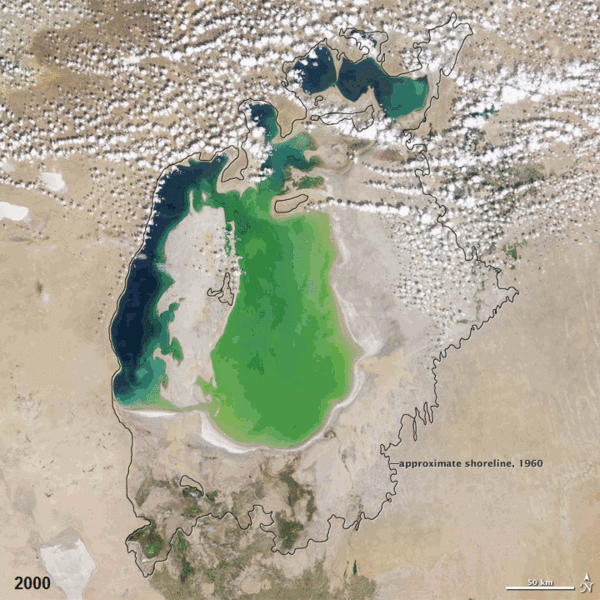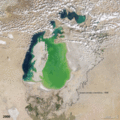Plik:Aral sea.gif

Rozmiar podglądu – 600 × 600 pikseli. Inne rozdzielczości: 240 × 240 pikseli | 480 × 480 pikseli | 720 × 720 pikseli.
Rozmiar pierwotny (720 × 720 pikseli, rozmiar pliku: 3,16 MB, typ MIME: image/gif, zapętlony, 12 klatek, 12 s)
Historia pliku
Kliknij na datę/czas, aby zobaczyć, jak plik wyglądał w tym czasie.
| Data i czas | Miniatura | Wymiary | Użytkownik | Opis | |
|---|---|---|---|---|---|
| aktualny | 09:38, 19 gru 2011 |  | 720 × 720 (3,16 MB) | ComputerHotline | == Summary == {{Information |Description={{en|In the 1960s, the Soviet Union undertook a major water diversion project on the arid plains of Kazakhstan, Uzbekistan, and Turkmenistan. The region’s two major rivers, fed from snowmelt and precipitation in |
| 14:19, 25 gru 2010 |  | 720 × 720 (2,92 MB) | ComputerHotline | == Summary == {{Information |Description={{en|In the 1960s, the Soviet Union undertook a major water diversion project on the arid plains of Kazakhstan, Uzbekistan, and Turkmenistan. The region’s two major rivers, fed from snowmelt and precipitation in |
Lokalne wykorzystanie pliku
Następujące strony korzystają z tego pliku:
Globalne wykorzystanie pliku
Ten plik jest wykorzystywany także w innych projektach wiki:
- Wykorzystanie na ba.wikipedia.org
- Wykorzystanie na ca.wikipedia.org
- Wykorzystanie na en.wikibooks.org
- Wykorzystanie na es.wikipedia.org
- Wykorzystanie na et.wikipedia.org
- Wykorzystanie na eu.wikipedia.org
- Wykorzystanie na fr.wikipedia.org
- Wykorzystanie na hsb.wikipedia.org
- Wykorzystanie na kk.wikipedia.org
- Wykorzystanie na ro.wikipedia.org
- Wykorzystanie na ru.wikipedia.org
- Wykorzystanie na ru.wikibooks.org
- Wykorzystanie na ru.wikinews.org
- Wykorzystanie na simple.wikipedia.org
- Wykorzystanie na sk.wikipedia.org
- Wykorzystanie na uz.wikipedia.org



